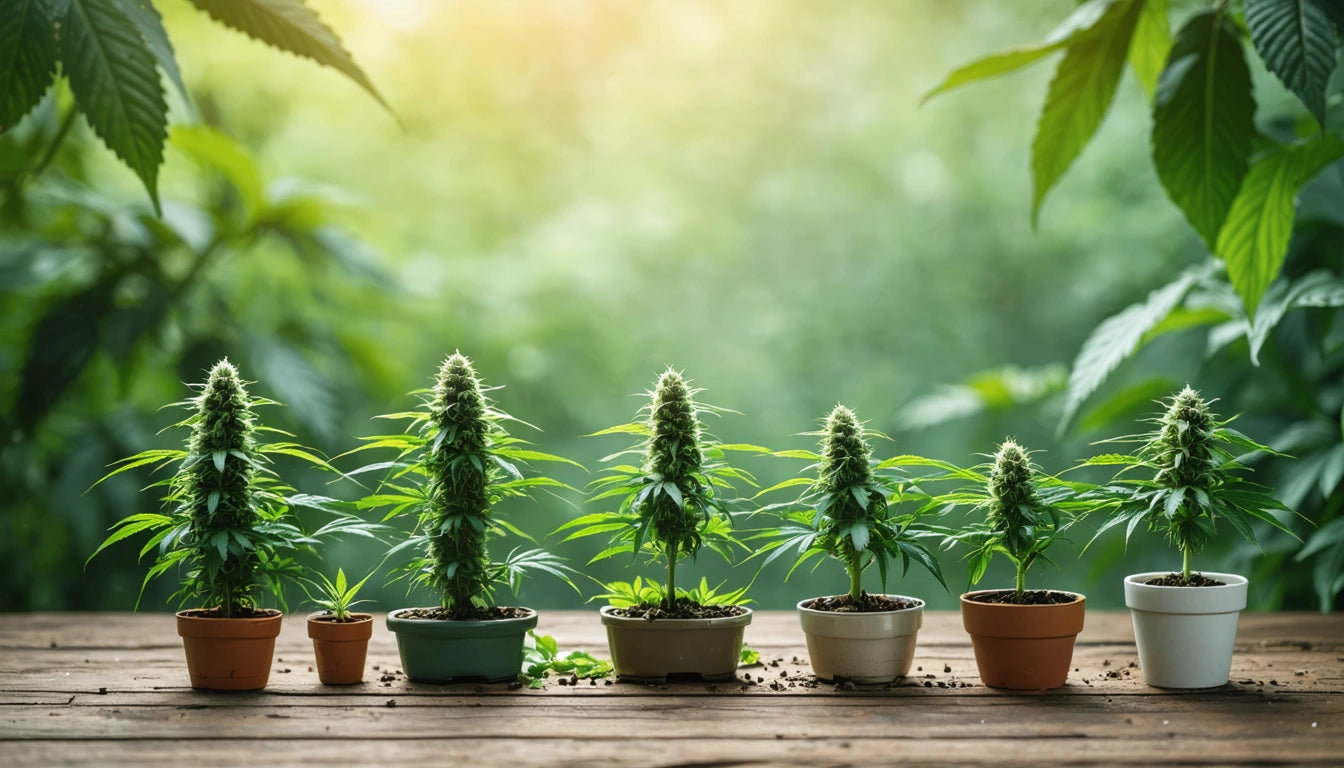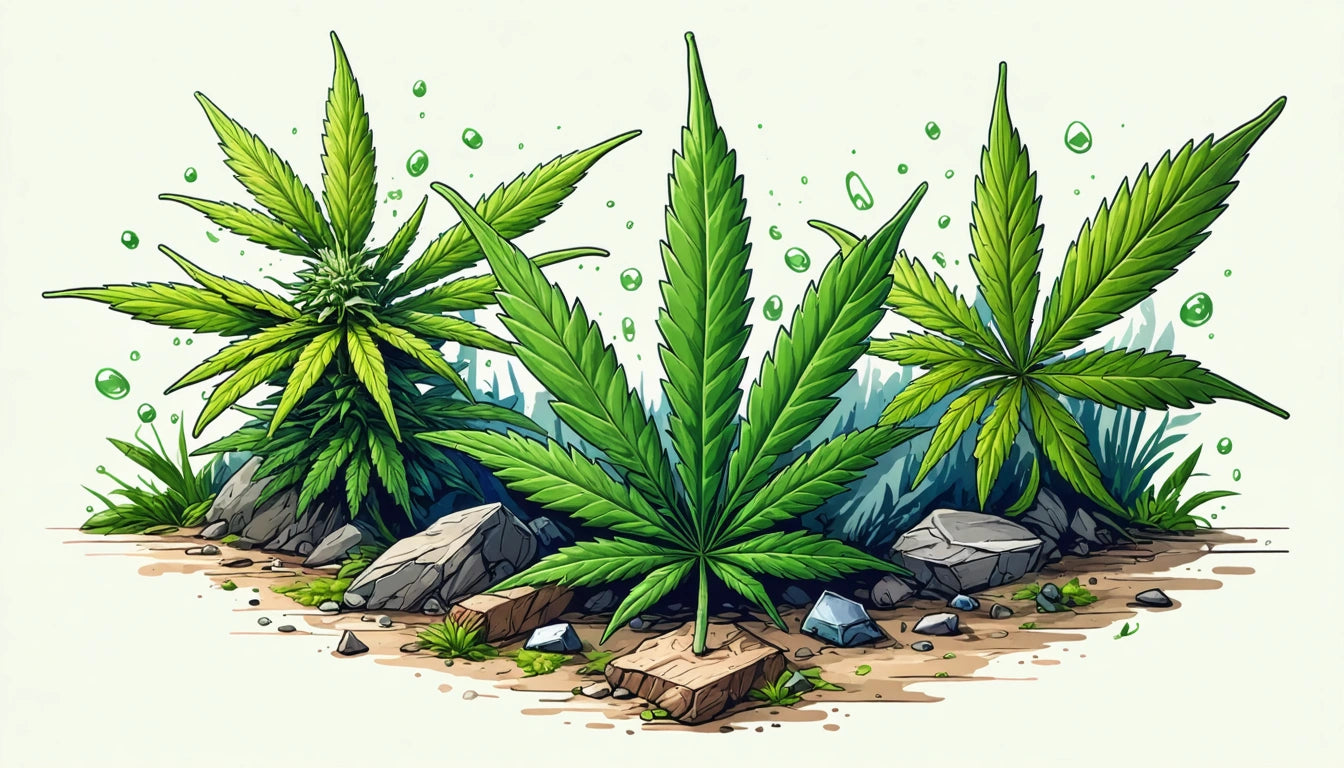Table of Contents
- Getting Started with Cannabis Cultivation
- Selecting the Right Seeds and Germination
- Creating the Optimal Growing Environment
- Nutrients and Watering Schedules
- Training Techniques for Higher Yields
- Common Problems and Solutions
- Harvesting, Drying, and Curing
- Taking Your Cannabis Growing to the Next Level
The Ultimate Guide to Growing Cannabis at Home: From Seeds to Harvest
Learning how to grow cannabis at home can be a rewarding journey that provides you with a steady supply of high-quality flower tailored to your preferences. Whether you're interested in growing for medicinal purposes or personal enjoyment, this comprehensive guide will walk you through the entire process from germination to harvest.
Getting Started with Cannabis Cultivation
Before planting your first seed, it's essential to understand the legal landscape in your area. Many regions have specific regulations about home cultivation, including plant count limits and requirements for securing your grow space. Once you've confirmed legality, you'll need to decide whether to grow indoors or outdoors.
Indoor growing offers more control over environmental factors but requires more equipment. Outdoor growing leverages natural sunlight but is subject to seasonal limitations and weather conditions. For beginners, indoor growing often provides a more consistent experience.
Basic Equipment Checklist
- Growing container (fabric pots are recommended for better root development)
- High-quality soil or growing medium
- Lighting system (LED or HPS for indoor grows)
- Ventilation equipment
- pH and TDS/EC meters
- Nutrients specific for cannabis
- Thermometer and hygrometer
Selecting the Right Seeds and Germination
The foundation of a successful grow begins with quality genetics. Cannabis seeds come in three primary types: regular, feminized, and autoflowering. For beginners, feminized seeds are recommended as they eliminate the need to identify and remove male plants, which don't produce consumable flower.
When selecting strains, consider your growing environment and goals. Indica-dominant strains typically grow shorter with denser buds, while sativa-dominant varieties can stretch significantly during flowering. Hybrid strains offer balanced characteristics that can be ideal for first-time growers.
For germination, the paper towel method is simple and effective:
- Place seeds between damp paper towels on a plate
- Cover with another plate to create a dark, humid environment
- Check daily and transfer to soil once taproots emerge (usually 2-7 days)
More detailed instructions can be found in our step-by-step seed growing guide.
Highlight: Learning how to grow dense cannabis buds starts with genetics, but environmental factors and proper feeding schedules are equally important for developing trichome-rich flowers.
Creating the Optimal Growing Environment
Cannabis plants thrive under specific conditions. During the vegetative stage, they prefer:
- Temperature: 70-85 °F (21-29 °C)
- Humidity: 40-70% (higher during early growth)
- Light cycle: 18 hours on, 6 hours off
- Adequate airflow to strengthen stems
For the flowering stage, adjust to:
- Temperature: 65-80 °F (18-26 °C)
- Humidity: 30-50% (lower to prevent mold)
- Light cycle: 12 hours on, 12 hours off (for photoperiod plants)
If you're wondering how to grow hydroponic cannabis, this soil-less method uses water-based nutrient solutions instead of soil. While more technically demanding, hydroponic systems can produce faster growth and potentially higher yields. They require more precise monitoring of pH (5.5-6.5) and nutrient levels.
Nutrients and Watering Schedules
Cannabis requires different nutrients throughout its lifecycle. During vegetative growth, plants need higher nitrogen levels. As flowering begins, phosphorus and potassium become more important for bud development.
Commercial cannabis nutrients typically come in sets labeled for grow (vegetative) and bloom (flowering) stages. Start with half the recommended strength to avoid nutrient burn, especially with younger plants.
For watering, follow this simple rule: wait until the top inch of soil feels dry before watering again. Overwatering is one of the most common mistakes when learning how to grow cannabis plants. Water thoroughly until you see some runoff, then wait for the soil to dry again before the next watering.
Training Techniques for Higher Yields
Understanding how to train cannabis plants can significantly increase your yields. Popular methods include:
Low-Stress Training (LST)
This involves gently bending and securing branches horizontally to create an even canopy that receives uniform light exposure. LST is perfect for beginners as it's gentle on plants and difficult to get wrong.
Topping and FIMing
These techniques involve cutting the main growth tip to encourage the plant to develop multiple main colas instead of one. Topping removes the tip completely, while FIMing ("F**k, I Missed") removes about 75% of the tip.
Screen of Green (SCROG)
This method uses a screen or net placed above plants. As branches grow through the screen, they're tucked back under, creating an even canopy and maximizing light efficiency.
Mainlining
Learning how to mainline cannabis involves creating a manifold at the base of the plant from which symmetrical branches grow. This creates uniform bud development and can significantly increase yields when done correctly.
For those looking to enhance their pre-roll products, our selection of custom cones offers various options to showcase your home-grown cannabis in style once it's harvested and processed.
Common Problems and Solutions
Even experienced growers encounter issues. Here are some common problems and their solutions:
Nutrient Deficiencies
Yellowing leaves often indicate nitrogen deficiency, while purple stems might suggest phosphorus issues. A good cannabis-specific nutrient regimen and proper pH management (6.0-7.0 for soil, 5.5-6.5 for hydro) can prevent most deficiencies.
Pests
Spider mites, aphids, and fungus gnats are common cannabis pests. Preventative measures include maintaining a clean grow space and using organic pest management solutions like neem oil or introducing beneficial insects.
Light Burn
Keeping lights too close can damage plants. Follow manufacturer recommendations for hanging heights and watch for upward-curling leaves, which often indicate light stress.
Harvesting, Drying, and Curing
Knowing when and how to harvest is crucial for maximizing potency and flavor. Look for these signs of readiness:
- Pistils (hairs) turning from white to orange/brown (70-90%)
- Trichomes changing from clear to cloudy (for peak THC) or amber (for more CBD and a relaxing effect)
- Leaves beginning to yellow as the plant diverts energy to flower production
For harvesting:
- Cut branches and remove large fan leaves
- Hang branches upside down in a dark room (60-70 °F with 45-55% humidity)
- Dry until stems snap rather than bend (typically 7-14 days)
- Trim remaining leaves and place buds in glass jars for curing
- Open jars daily for the first week, then less frequently over 2-8 weeks
A detailed breakdown of this process is available in our complete harvesting guide.
Taking Your Cannabis Growing to the Next Level
Once you've mastered the basics of how to grow cannabis at home, you might want to explore advanced techniques. Consider experimenting with different training methods, exploring breeding to create your own strains, or setting up automated systems to maintain optimal growing conditions.
Remember that growing cannabis is both a science and an art. Each cycle provides new learning opportunities, and even experienced growers continually refine their approach. Document your process, take notes on what works and what doesn't, and don't be afraid to experiment within the parameters of good growing practices.
With patience, attention to detail, and a willingness to learn, you'll be harvesting dense, aromatic buds from your own garden in no time. The journey of learning how to grow cannabis from start to finish is ongoing, but the rewards of self-sufficiency and quality control make it well worth the effort.











Leave a comment
All comments are moderated before being published.
This site is protected by hCaptcha and the hCaptcha Privacy Policy and Terms of Service apply.